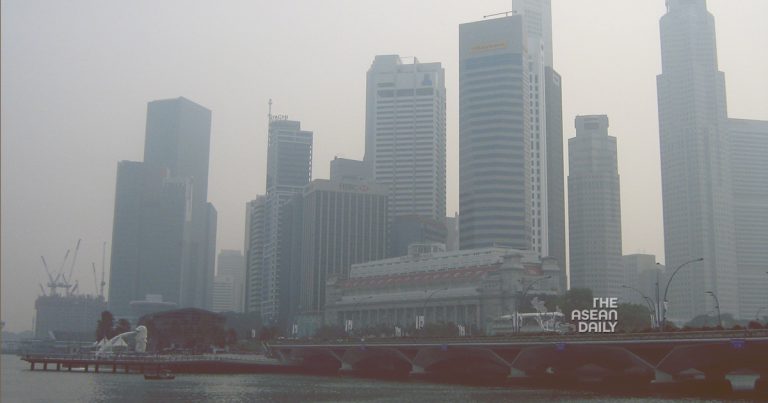7-10-2023 (SINGAPORE) The National Environment Agency (NEA) issued a warning on Friday, October 6, stating that if the forest fires in Indonesia continue to rage, and unfavorable wind conditions persist, the air quality in Singapore could soon fall into the unhealthy range. The agency reported a “significant increase” in the number of hotspots in Sumatra, with a sharp rise from 65 on Thursday to 212 on Friday, compared to a mere 15 on Wednesday.
The NEA’s media release highlighted that satellite imagery captured smoke plumes and haze over southern and central Sumatra. A temporary shift in the wind direction, moving from southeasterly to southerly, caused lighter haze to drift towards Singapore, resulting in a noticeable deterioration in air quality.
The statement from NEA noted, “There is a likelihood of haze affecting Singapore over the coming weekend if the fires persist and winds direction is unfavourable.” The 1-hour PM2.5 levels in the southern and eastern regions of Singapore surged above 55 ug/m3 on Friday afternoon and remained elevated at 10pm.
Should this situation persist, the NEA expressed concerns that the 24-hour Pollutant Standards Index (PSI) could soon reach the unhealthy range, exceeding 100 over the weekend. To keep the public informed, the agency announced it would commence providing daily haze advisories starting from Saturday evening.
These daily haze advisories will incorporate the 24-hour PSI forecast, which can be utilized by the public for planning their activities and events over the next 24 hours. The NEA has also taken proactive measures by issuing advisories to various sectors, including healthcare institutions, preschools, schools, and workplaces. This is to ensure that appropriate haze management measures are taken, especially to protect more vulnerable groups if the 24-hour PSI enters the unhealthy range.
As of 11.30 pm on Friday, the 24-hour PSI in the eastern region stood at 82. The last time the 24-hour PSI exceeded 80 was in 2019.
In readiness for any further deterioration in air quality, NEA mentioned last Friday that the government’s Haze Task Force, comprising 28 public agencies, is fully prepared to implement their respective haze action plans. These measures aim to combat the adverse effects of unhealthy air quality on the population.




